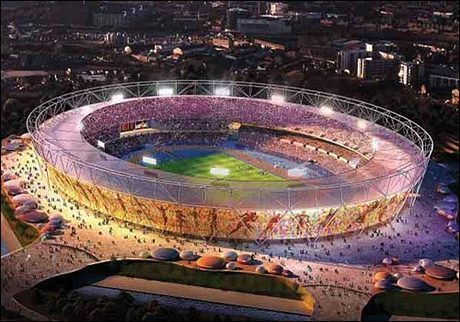Olympic Stadium
Estadi Olimpic has 70,000 seats and it features a museum (the Galeria Olimpica) and the nearby Palau Jordi Sports Place. The museum houses the Hall of Fame, an observatory, and the Samaranch Collection.
Estadi Olímpic Lluís Companys, formerly known as the Estadi Olímpic de Montjuïc, is a stadium in Barcelona, Catalonia, Spain. Originally built in 1927 for the 1929 International Exposition in the city (and Barcelona's bid for the 1936 Summer Olympics, which were awarded to Berlin), it was renovated in 1989 to be the main stadium for the 1992 Summer Olympics. The stadium has a capacity of 55,926 (67,007 during the 1992 Olympics), and is located in the Anella Olímpica, in Montjuïc, a large hill to the southwest of the city which overlooks the harbour. In 2001 the stadium was renamed after the former president of the Generalitat de Catalunya Lluís Companys i Jover, who was executed at the nearby Montjuïc Castle in 1940 by the Franco regime.
The stadium, designed by architect Pere Domènech i Roura for the 1929 Expo, was meant to host the People's Olympiad in 1936, a protest event against the 1936 Summer Olympics in Berlin, but the event had to be cancelled due the outbreak of the Spanish Civil War.
In the fifties, the stadium was the centerpiece of the 1955 Mediterranean Games, and in 1957 it hosted the only national football cup final between FC Barcelona and RCD Espanyol, the two local clubs.
In the seventies, the stadium was disused, and the stands deteriorated. When the Spanish Grand Prix and other races were held at the Montjuïc racing circuit, the stadium was used as a paddock for the teams. Due to safety concerns, the 1975 F1 race was nearly boycotted by drivers.
Due to the award of the 1992 Summer Olympics to Barcelona, the stadium was renovated with the involvement of Italian architect Vittorio Gregotti. The stadium was gutted, preserving only the original facades, and new grandstands were built. In 1989 the venue was reinaugurated for the World Cup in Athletics, and three years later it hosted the opening and closing ceremonies and the athletics competitions of the Olympic Games. The stadium served as the home of football club RCD Espanyol from 1997 until 2009. The Estadi Olímpic made its final La Liga appearance during the 2008-2009 season, as Espanyol moved to the newly constructed Estadi Cornellà-El Prat. It also served as the home of the Barcelona Dragons American Football team until 2003. Because the size of the playing surface was slightly shorter than the regulation American Football length, the stadium only had 7-yard end zones, three yards shorter than regulation NFL size. In 2010, the stadium hosted the 20th European Athletics Championships.
Also in the Olympic Ring and worth catching is Santiago Calatrava's impossibly elegant Montjuic Communications Tower, which is an abstract depiction of an athlete holding the olympic torch. It features a Gaudiesque touch with its trencadi effect of broken tiles.
This futuristic stadium is an extremely popular venue for concerts, indoor athletics and swimming events. It holds a capacity of 24, 000 and was designed by award-winning architect Arata Isozaki. The Olympic Stadium is served by Espanya metro station (red line, green line) and Magòria-La Campana FGC station.
The stadium is not the most notable sight of the city, but it's become a part of its history already, so take a look of the sight while you travel across Barcelona. The stadium's museum deserves some attention if you love sport.
The Olympic Stadium at Barcelona is not only an excellent tourist attraction and wonderful piece of architecture; it is the symbol of the first Olympic Games in twelve years where not one country boycotted the event, the first truly unified games that brought the point of the Olympics back home. You can get there via direct flight to Barcelona or to Girona, Reus or Lleida–Alguaire.



